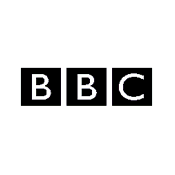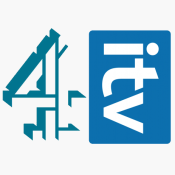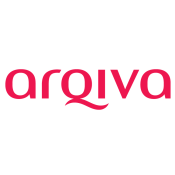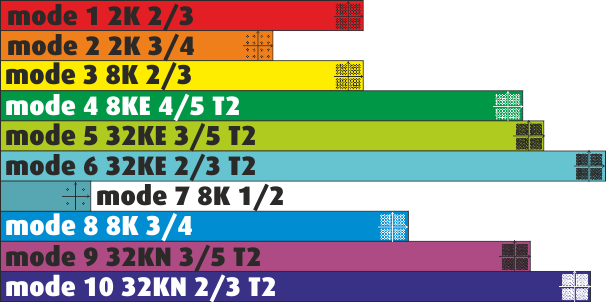Why do the six Freeview "multiplexes" have twenty different names?
 Brian Butterworth published on UK Free TV
Brian Butterworth published on UK Free TV All digital television services - from cable and satellite to terrestrial transmission - were planned and implemented to use the existing "analogue" broadcasting infrastructure.
The engineers who designed the services created digital broadcasting systems that would allow the reliable distribution of bits using the same infrastructure of cables and masts (or satellites) that already carried the analogue services to millions of homes.
Part of the design process allowed for more than one television channel to be carried by the digital system using a long-established data-processing technique called "multiplexing", a word that had, by another route, also come to mean a cinema complex where several films are shown at once on different screens.
It was back in 1996 that Parliament decided that the UK should have a six-multiplex service.
The Broadcasting Act 1996 provided that these "multiplex licences" should be issued for 12 years with a one-time right-to-renew.
Independent Television Commission: 1, 2, A, B, C and D
The regulator at the time, the ITC (Independent Television Commission) said:Of these six multiplexes, two are wholly reserved for existing broadcasters who are guaranteed places on the multiplexes under the Broadcasting Act 1996. The first will be used by the BBC to transmit existing programmes in digital form and develop new digital services. The second is reserved for Channel 3, Channel 4 and Teletext Ltd whose existing services will be reproduced in digital form, and who can use the additional capacity available for new services. This multiplex will be licensed and regulated by the ITC.
Licences to operate the remaining four were advertised and three have now been awarded to British Digital Broadcasting plc (BDB). The fourth multiplex, the third largest in terms of UK coverage, has been awarded to S4C Digital Networks Ltd (SDN). It will carry the new Channel 5, S4C in Wales, and a certain amount of Gaelic programming during peak hours in Scotland.
The ITC named the "wholly reserved" multiplexes 1 and 2, and the others, by the level of coverage: A, B, C and D.

British Digital Broadcasting plc eventually launched their service as ONdigital on 15th November 1998, re-launched as ITV Digital on 11th July 2001 and went out of business on 1st May 2002.
ITV Digital handed back B, C and D multiplex licences to the regulator, who awarded them to the promise of a free-to-air service the BBC and Crown Castle International, a company formed by the privatization of the BBC's transmitter network.
Freeview
 When Freeview started on 30th October 2002, the BBC realised that the existing broadcasting "mode" used for the digital services was causing problems for some viewers. For this reason, some multiplexes changed from "mode 1" to "mode 2" (see the diagram at the end of the article), which provided a more stable signal, but with the loss of some channel capacity. See Freeview modes - a simplified explanation for a longer discussion about this.
When Freeview started on 30th October 2002, the BBC realised that the existing broadcasting "mode" used for the digital services was causing problems for some viewers. For this reason, some multiplexes changed from "mode 1" to "mode 2" (see the diagram at the end of the article), which provided a more stable signal, but with the loss of some channel capacity. See Freeview modes - a simplified explanation for a longer discussion about this.
This was not a problem for the BBC with six full-time television channels to fit onto two whole multiplexes. So, multiplexes 1, B, C and D changed to the robust mode, but 2 and A did not.
Ofcom plans PSBs and COMs
 During the planning for the digital switchover, where the existing analogue channels are turned off over several years, Ofcom, now the regulator used the names PSB1, PSB2, COM4, PSB3, COM5 and COM6 to refer to the six multiplexes.
During the planning for the digital switchover, where the existing analogue channels are turned off over several years, Ofcom, now the regulator used the names PSB1, PSB2, COM4, PSB3, COM5 and COM6 to refer to the six multiplexes.
PSB refers to the "public service broadcasters" (BBC, Channel 3 licence holders - ITV plc, STV and UTV, Channel 4 Corporation, S4C - Sianel Pedwar Cymru, Channel 5 and the "public teletext service".
The PSB multiplexes have almost total coverage of UK homes - 98.5%, and are broadcast from all television masts in the UK, including 1,036 smaller ones that only carry the PSB services.
COM is an abbreviation of "commercial", referring to the two multiplexes held by Arqiva, the company that owns and operates all of the UK television transmitters, and SDN, a company owned by ITV plc.
The COM multiplexes have coverage of around 90%, and are broadcast from the main 81 transmitters.
Because this planning required that all multiplexes move to "mode 3" the post-switchover multiplexes these new descriptions have been widely used to represent the "final" multiplexes, even though legally they are named 1, 2, A, B, C and D - see Ofcom - Multiplex licensees.
The introduction of Freeview HD has seen the BBC change the use of the BBC multiplex to "DVB-T2" mode, and in addition, during 2012 the commercial multiplexes have changed to "mode 8 configuration", which has increased their capacity by another 12.5% - see Changes to commercial multiplex capacity - 2012 timetable .
Eight more names
Digital UK now refers to the multiplex by the name of the ower, usually four letters, but sometimes the written in full, so we now have:Multiplex 1 is also known as PSB1 and also BBCA
 BBCA denotes the first BBC multiplex when in "mode 3", with all the services from "mode 2" multiplexes 1 and B. This multiplex has many regional versions to supply BBC regional news on BBC One.
BBCA denotes the first BBC multiplex when in "mode 3", with all the services from "mode 2" multiplexes 1 and B. This multiplex has many regional versions to supply BBC regional news on BBC One.
Multiplex 2 is also known as PSB2 and also D3+4
 The legal owner is "Digital 3 and 4 Ltd", which is half-owned by the Channel 3 licensee, and half-owned by the Channel 4 Corporation. This multiplex has more than 20 regional versions to supply regional news on ITV 1/STV/UTV, plus advert regions for that station, Channel 4, Channel 5 and the channels 3 and 4 "plus one" services.
The legal owner is "Digital 3 and 4 Ltd", which is half-owned by the Channel 3 licensee, and half-owned by the Channel 4 Corporation. This multiplex has more than 20 regional versions to supply regional news on ITV 1/STV/UTV, plus advert regions for that station, Channel 4, Channel 5 and the channels 3 and 4 "plus one" services.
Multiplex A is also known as COM4 and also SDN
 SDN, originally "S4C Digital Networks" was sold to ITV plc in April 2005 for £134m. The SDN multiplex has two versions, one for Wales, where it carries E4 and one for the rest of the UK.
SDN, originally "S4C Digital Networks" was sold to ITV plc in April 2005 for £134m. The SDN multiplex has two versions, one for Wales, where it carries E4 and one for the rest of the UK.
Multiplex B is also known as PSB3 and also BBCB
Multiplex C is also known as COM5 and also ArqA (or ArqivaA)
 The "mode 3" (now "mode 8") post-switchover ArqA/COM5 multiplex carries all the services on "mode 1" Multiplex C, with space for couple of extra TV channels.
The "mode 3" (now "mode 8") post-switchover ArqA/COM5 multiplex carries all the services on "mode 1" Multiplex C, with space for couple of extra TV channels.
Multiplex D is also known as COM6 and also ArqB (or ArqivaB)
 The "mode 3" (now "mode 8") post-switchover ArqA/COM5 multiplex carries all the services on "mode 1" Multiplex D, with space for couple of extra TV channels, which include 4seven and two subscription channels, Sky Sports 1 and 2.
The "mode 3" (now "mode 8") post-switchover ArqA/COM5 multiplex carries all the services on "mode 1" Multiplex D, with space for couple of extra TV channels, which include 4seven and two subscription channels, Sky Sports 1 and 2.
Freeview standard transmission "modes"

The above diagram illustrates the capacity of different ONdigital/ITV digital/Freeview transmissions over the years. The longer the bar, the more bits are transmitted per second. Mode 2 is 16QAM, mode 7 is QSPK, the DVB-T2 modes are 256QAM, the rest 64QAM.
9:15 AM
Hi,
The retune on 27 Jun made me lose TrueMovies and TrueEntertainment on my Humax FVP4000T.
the channels are okay on my Sony TV though. I have tried reset factory default for retune and even
manual retunes changing the channel specs but it still will not pickup chan50 or 62. The Firmware
software on the Humax is uptodate from April 2019. I suspect obviously its something the Humax
cannot cope with from the change. Whats your opinion?
| link to this comment |
10:42 AM
J L Walker:
As you have not given a full post code we cannot look up whther the transmitter you are using has any local multiplexes, which is where True Entertainment are now broadcast. If your transmitter has not got any local services, most do not have, then you will not get those channels. If you are too far away from the transmitter, again you will be unlikely to get those channels as they would be broadcast on a lower power service than the main channels.
| link to this comment |
9:10 AM
MikeP: Hi Mike
Sri my pc is CV77DQ and my place is according to suttoncoldfield 27km with adequate coverage.
I got these channels okay on my Sony TV but Humax box as lost them and it seems will not recover them.
So I guess its really not reception but a problem for Humax Software.
As someone commented its probably best not to retune on Humax in the future.
| link to this comment |
10:51 AM
J L Walker: You are not predicted to get good reception of a local TV multiplex at your postcode (the Digital UK checker suggests you may get some weak reception of the Oxford local mux), so any reception of True Entertainment or True Movies will be difficult.
| link to this comment |
7:43 PM
J L Walker:
Check your aerial connections to your Humax. If you can get the local mux on your tv, you should get it on your Humax, but only retune when you know the signals are good ie getting them on your tv.
Also check the Humax website and look at their forums to see if you have the latest firmware and for any other tips. One trick that sometimes works is do an automatic retune with the aerial unplugged to clear all previous tuning then do a manual tune of the UHF channels for the multiplexes that you want/can get (when the signals are good).
| link to this comment |
8:56 AM
Alnwick
Hi,
My TV has been losing its signal every night at precisely midnight for the past month. The signal comes back on the next day, without the need to retune, anywhere between 8am and as late as noon sometimes and then remains on again until precisely midnight every time which suggests to me it is not a random loss of signal. The Freeview website tells me I'm within the Chatton transmitter area but that transmitter always seems to be working normally. Was wondering if I'm receiving from Pontop Pike as it seems to be going through a period of modification? My TV signal has just come on again at 9:45 am 7th October 2019. My post code is NE66 1SF.
Sincerely,
Ian.
| link to this comment |
Ian's: mapI's Freeview map terrainI's terrain plot wavesI's frequency data I's Freeview Detailed Coverage
7:28 AM
Ian:
Putting your postcode into the DigitalUK checker About us | Freeview shows no predicted reception from Pontop Pike but Very Good reception from Chatton. The aerial should be pointing roughly NNW (327deg) with the rods horizontal. You can also check from your receiver's tuning section that you are tuned to the correct UHF channels for Chatton.
What you describe sounds very much like interference from some equipment that is on a timer as it starts at "precisely" the same time each night.
The usual culprit at that time of day would be off-peak electric heating, but at the same time the fact that it doesn't stop at around 7hrs or so later and is variable is a slight puzzle.
The only thing I can think of in connection with that would be where a heater has a fan, where the fan can run later than the heating input and is perhaps temperature dependant.
Another possibility is security or other (Discharge) lighting which comes on with a timer but is set to go off some time in daylight but the actual turn off is controlled by a daylight sensor - which at this time of year, with recent weather conditions could be very variable. By Discharge lighting I mean not plain tungsten or halogen, but fluorescent, low or high pressure sodium or mercury, or metal halide.
Note, none of such equipment need be yours, it may be a near neighbour or public utility as when faulty it can produce strong interference which can radiate and/or travel up the mains supply. There is the possibility that the equipment producing such interference is switched on & off manually, and is turned on by someone starting a job at exactly the same time each night but finish times being variable.
| link to this comment |
8:41 AM
I'm in Bowsden, similar area to Ian, & am having the same issue of channel drop out around midnight.
Chatton is my presumed transmitter too.
It's only some of the channels like Horror & Yesterday with BBC mostly unaffected.
Happened Oct 9th & 10th.
Re-tuning during the outage results in those channels being completely missed.
However if you do nothing they will be picked up again sometime the next day.
| link to this comment |
5:55 PM
I am trying to pick up the new Sony classic movie channel introduced in uk 7th Jan 2020
I know its Freeview ch 50 but what mux do I need to retune to pick that channel up
| link to this comment |
7:09 PM
Bob Dibb:
See Channel listings | Freeview
It's on a Local multiplex which means if your main transmitter doesn't have a local mux, you will be out of luck.
| link to this comment |